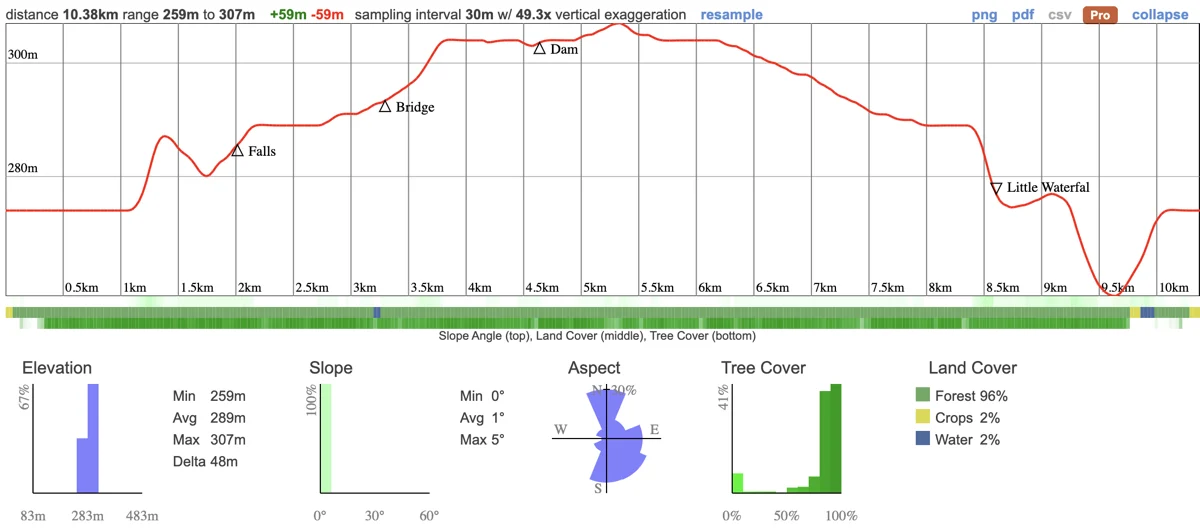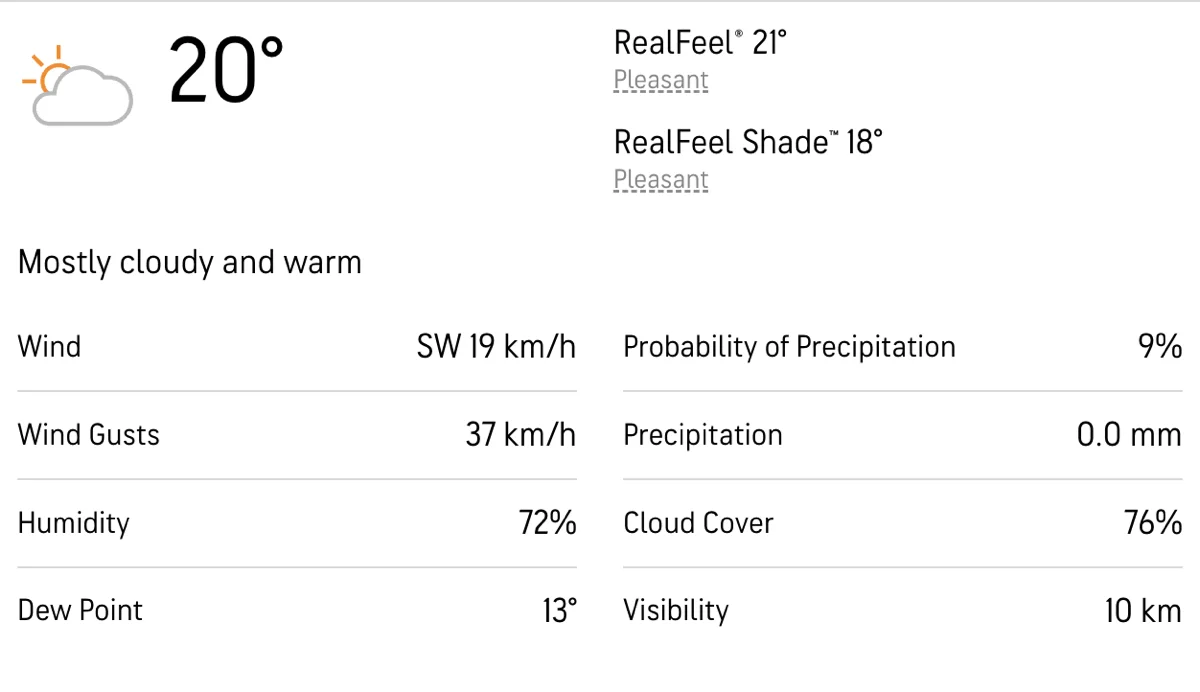Rory's leading us on our first visit to Hilton Falls Conservation Area.
The main attraction is undoubtedly the Hilton Falls itself. This beautiful waterfall, set beside the ruins of three 19th-century sawmills, offers a magical backdrop for the hike. The area around the falls is particularly picturesque, with rocky cliffs and a small wooden platform that allows visitors to get a closer look at the waterfall. Beyond the falls, the conservation area is home to a variety of natural landscapes, including forests, streams, beaver ponds, and a reservoir
We'll be walking along the Bruce Trail at points on this easy 10km hike.
Hike length: 10km
Estimated time to complete hike: 4.5 hours

This is an easy looped hike with little in the way of elevation. We'll be walking on maintained paths through the woods.
09:50 - Those getting a ride meet up at the Petrocanada next to Keele Subway Station
10:00 - Shuttle leaves. Please note, we leave dead on time and cannot wait for latecomers!
10:45 - Arrive at Hilton Falls Conservation Area, meet up with self drivers and begin hike.
10:45-15:00 - Hike, eating lunch en route
16:00 - Anticipated return to Keele Station
This custom map is georeferenced, meaning it will show you where you are on the map in the right software and lays out the rough path that we’ll be following. It’s opened with the Avenza app which must be downloaded and installed in advance of the adventure.
You should also download the What3words app - this makes it easy to share and find locations in the unlikely event that you get lost.

General Notes
It will be unusually warm and likely muddy. There's also a good chance of rain in the afternoon so you'll want to be dressed in layers for all eventualities.
Shoes
Hiking boots are strongly recommended for this trip. Regular sneakers are not suitable
Packing list
Bring a packed lunch, snacks and at least 1.5 litre of water for the hike - it's looking warm.
Self drivers are strongly recommended to reserve admission in advance here and save a few bucks. Entrance is $10.50 per person in advance, $12 at the gate. Those travelling in the van have their entrance covered.
Hiking injuries - Wear appropriate footwear (ankle high hiking boots) and hike within your abilities. If you need extra support, bring hiking poles.
Cliffs - Keep away from any steep drops.
Getting lost - Stay with the group at all times, follow the instructions of the guides and download both the map referenced above as well as What3Words. You can't rely on having reception while out in the woods.
Ticks - Tick season has started again and they're active in the area we're visiting. Black Legged Ticks have the risk of carrying Lyme disease so it's important that you check yourself thoroughly after each hike. You're also recommended to have your legs covered so it's harder for them to latch on.
Hilton Falls is close to Crawford Lake which has an unusually well documented Indigenous history. The area was once home to a thriving Iroquoian village in the 15th century, before European contact.
In the early 1970s, researchers from the University of Toronto made a remarkable discovery while studying sediment cores from Crawford Lake. They detected high levels of corn pollen in layers dating back to the 13th-15th centuries, suggesting that the area was inhabited by an agricultural society during that time. This finding led to archaeological excavations which uncovered the remains of a pre-colonial Wendat (Huron) or Attawandaron (Neutral) village near the lake.
The village likely housed around 300 people from the ancestors of the Wendat or Attawandaron Nations. They cultivated crops like corn, beans, and squash, which allowed them to establish a more permanent settlement. Longhouses were built to shelter extended families, with each clan living communally.
For unknown reasons, the village was abandoned sometime in the early 16th century. The area then became a hunting ground for other Indigenous groups like the Mississaugas. When European settlers arrived in the late 18th century, the Mississaugas negotiated land agreements with the British, opening up the region for settlement.
Rory's leading us on our first visit to Hilton Falls Conservation Area.
The main attraction is undoubtedly the Hilton Falls itself. This beautiful waterfall, set beside the ruins of three 19th-century sawmills, offers a magical backdrop for the hike. The area around the falls is particularly picturesque, with rocky cliffs and a small wooden platform that allows visitors to get a closer look at the waterfall. Beyond the falls, the conservation area is home to a variety of natural landscapes, including forests, streams, beaver ponds, and a reservoir
We'll be walking along the Bruce Trail at points on this easy 10km hike.
Hike length: 10km
Estimated time to complete hike: 4.5 hours

This is an easy looped hike with little in the way of elevation. We'll be walking on maintained paths through the woods.
09:50 - Those getting a ride meet up at the Petrocanada next to Keele Subway Station
10:00 - Shuttle leaves. Please note, we leave dead on time and cannot wait for latecomers!
10:45 - Arrive at Hilton Falls Conservation Area, meet up with self drivers and begin hike.
10:45-15:00 - Hike, eating lunch en route
16:00 - Anticipated return to Keele Station
This custom map is georeferenced, meaning it will show you where you are on the map in the right software and lays out the rough path that we’ll be following. It’s opened with the Avenza app which must be downloaded and installed in advance of the adventure.
You should also download the What3words app - this makes it easy to share and find locations in the unlikely event that you get lost.


General Notes
It will be unusually warm and likely muddy. There's also a good chance of rain in the afternoon so you'll want to be dressed in layers for all eventualities.
Shoes
Hiking boots are strongly recommended for this trip. Regular sneakers are not suitable
Packing list
Bring a packed lunch, snacks and at least 1.5 litre of water for the hike - it's looking warm.
Self drivers are strongly recommended to reserve admission in advance here and save a few bucks. Entrance is $10.50 per person in advance, $12 at the gate. Those travelling in the van have their entrance covered.
Hiking injuries - Wear appropriate footwear (ankle high hiking boots) and hike within your abilities. If you need extra support, bring hiking poles.
Cliffs - Keep away from any steep drops.
Getting lost - Stay with the group at all times, follow the instructions of the guides and download both the map referenced above as well as What3Words. You can't rely on having reception while out in the woods.
Ticks - Tick season has started again and they're active in the area we're visiting. Black Legged Ticks have the risk of carrying Lyme disease so it's important that you check yourself thoroughly after each hike. You're also recommended to have your legs covered so it's harder for them to latch on.
Hilton Falls is close to Crawford Lake which has an unusually well documented Indigenous history. The area was once home to a thriving Iroquoian village in the 15th century, before European contact.
In the early 1970s, researchers from the University of Toronto made a remarkable discovery while studying sediment cores from Crawford Lake. They detected high levels of corn pollen in layers dating back to the 13th-15th centuries, suggesting that the area was inhabited by an agricultural society during that time. This finding led to archaeological excavations which uncovered the remains of a pre-colonial Wendat (Huron) or Attawandaron (Neutral) village near the lake.
The village likely housed around 300 people from the ancestors of the Wendat or Attawandaron Nations. They cultivated crops like corn, beans, and squash, which allowed them to establish a more permanent settlement. Longhouses were built to shelter extended families, with each clan living communally.
For unknown reasons, the village was abandoned sometime in the early 16th century. The area then became a hunting ground for other Indigenous groups like the Mississaugas. When European settlers arrived in the late 18th century, the Mississaugas negotiated land agreements with the British, opening up the region for settlement.